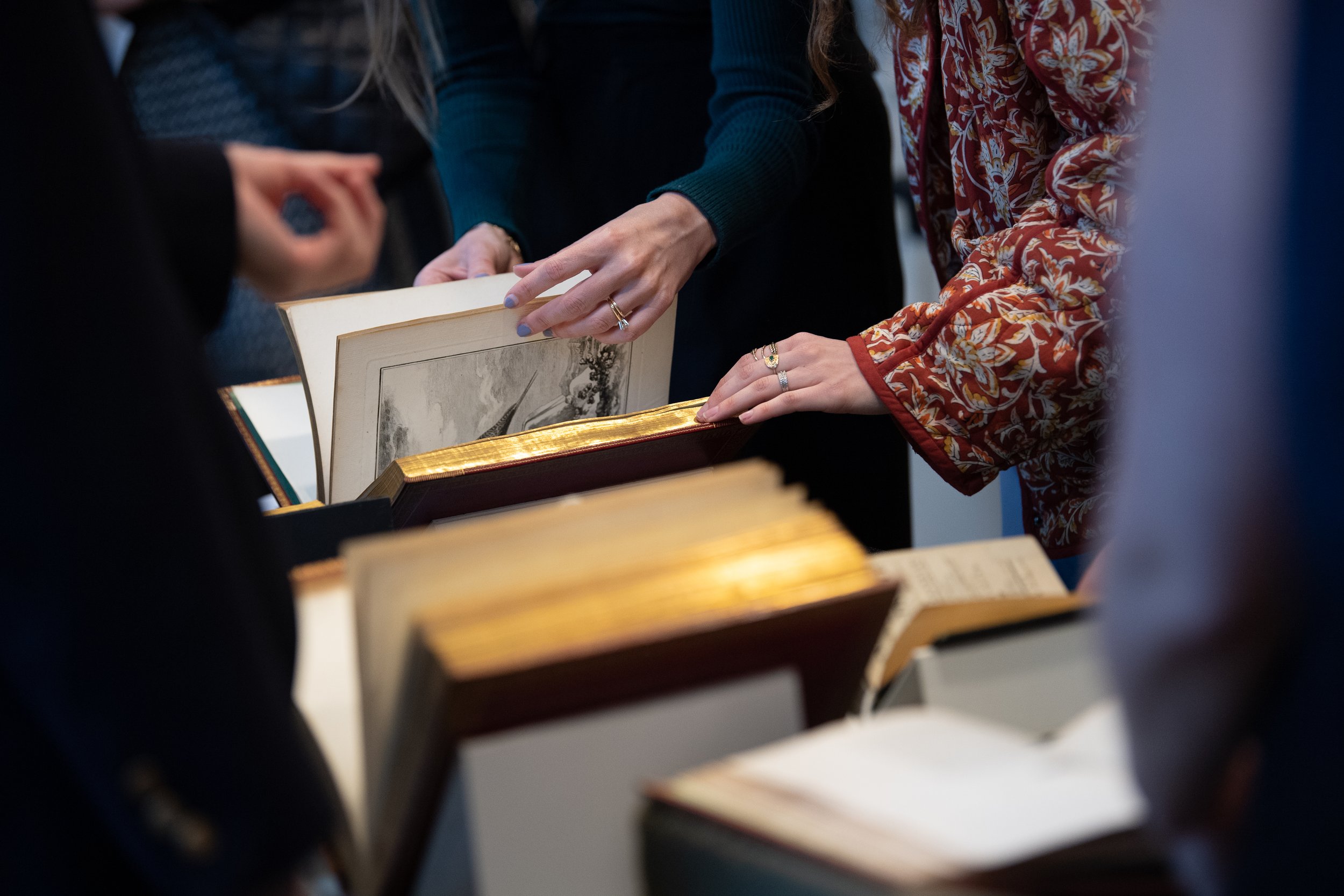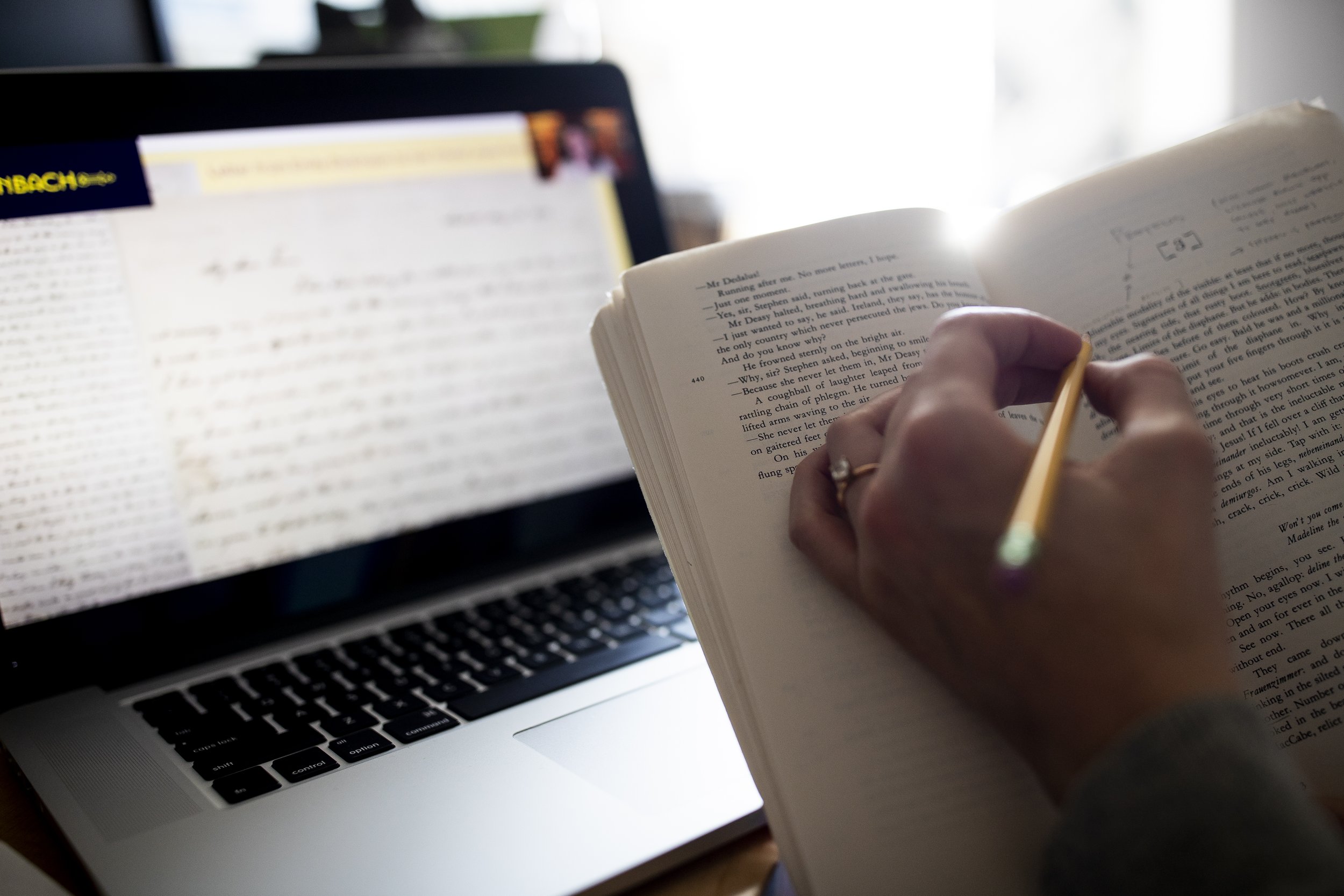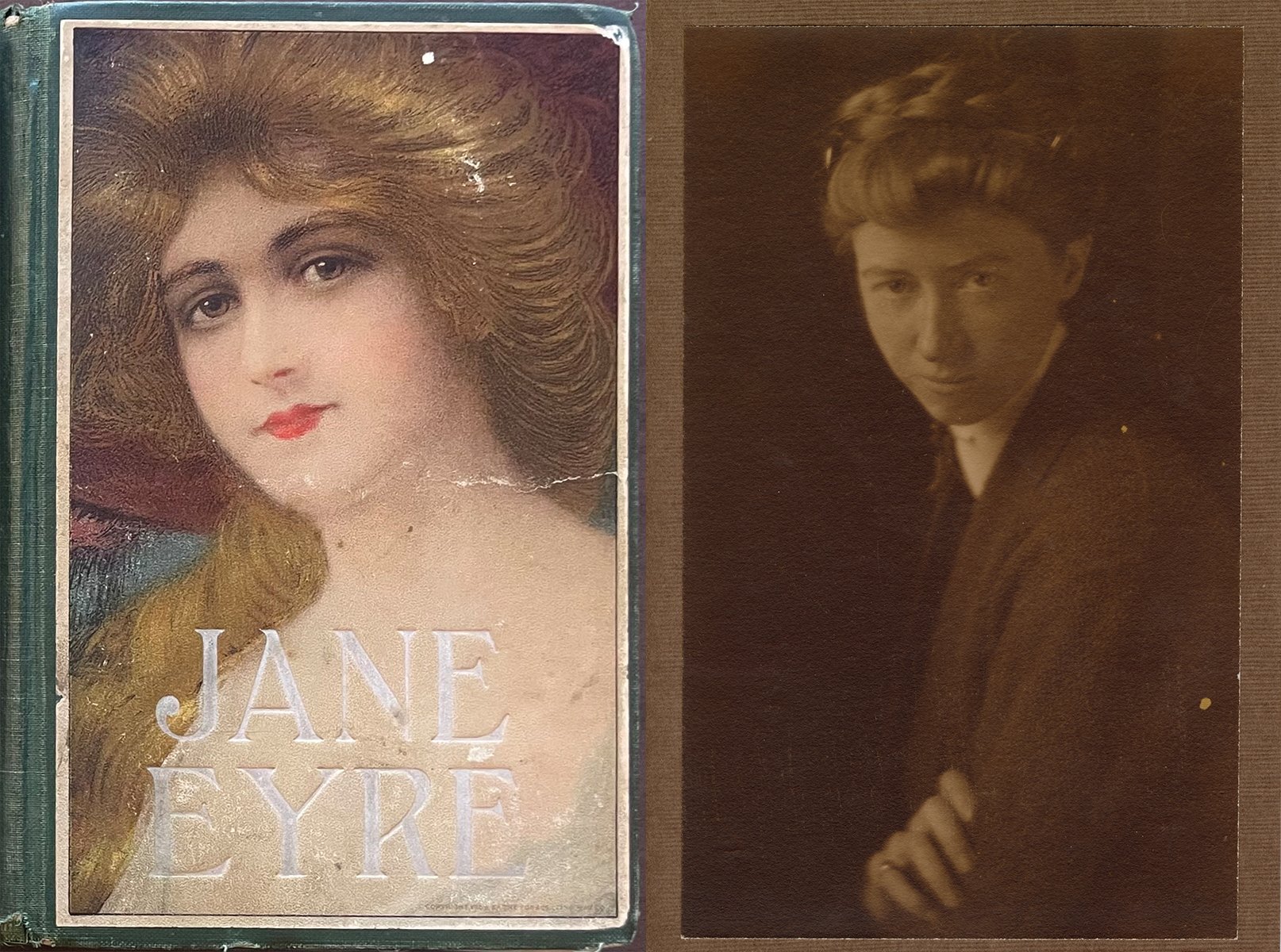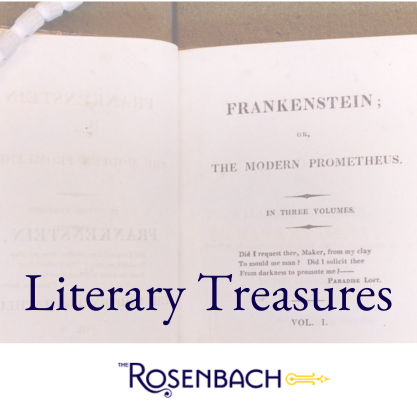















The Rosenbach Museum & Library is a community that engages with and celebrates the art of the written word using our collection of rare books and manuscripts.

Read the Rosenblog
Thanks to rare book dealer Rebecca Romney, I am more than halfway through Ann Radcliffe’s The Mysteries of Udolpho, a book I would have never picked up if it weren’t for Rebecca’s new book, Jane Austen’s Bookshelf…
When the American poet Marianne Moore (1887–1972) picked up this copy of Charlotte Brontë’s Jane Eyre, the cover must have caught her eye. A robust beauty gazes at the reader…
Listen to our Podcast
In this episode of the podcast shines a spotlight on an important portrait hanging in the Rosenbach’s stair hall, just outside the Treasures galleries.
In this episode of The Rosenbach Podcast, Professor Sheila Sandapen of Drexel University introduces us to some of the key themes shaping postcolonial Black British literature and makes a few suggestions as to authors and book titles for those who wish to explore the subject.
Browse our Collection
Oscar Wilde, Irish playwright, author and poet who lived during the second half of the 19th century, challenged the prevailing notions of Victorian society that believed art and literature should be didactic. A proponent of the Aesthetic and Decadent movements, he believed in “art for art’s sake…
Arguably one of the most well-recognized first lines in English literature, Jane Austen’s opening to Pride and Prejudice tells the astute reader what to expect from her novel. Rather than a straightforward romance, or a sentimental novel of the late eighteenth century, Pride and Prejudice, like the rest of Austen’s novels, is one of subtle, playful and tongue-in-cheek critique and commentary on her social world, that of the British landed gentry…
Written between 1387 and 1400 by Geoffrey Chaucer, an English royal court poet, The Canterbury Tales legitimized the literary use of Middle English, since most texts at the time were written in Latin. Chaucer is considered the father of English literature…
The Rosenbach’s copy of Ignatius Sancho’s Letters is a remarkable artifact of resilience in the face of suffering, a testament to the horrors of human trafficking, and an important primary source documenting the global history of enslavement in the 1700s…












